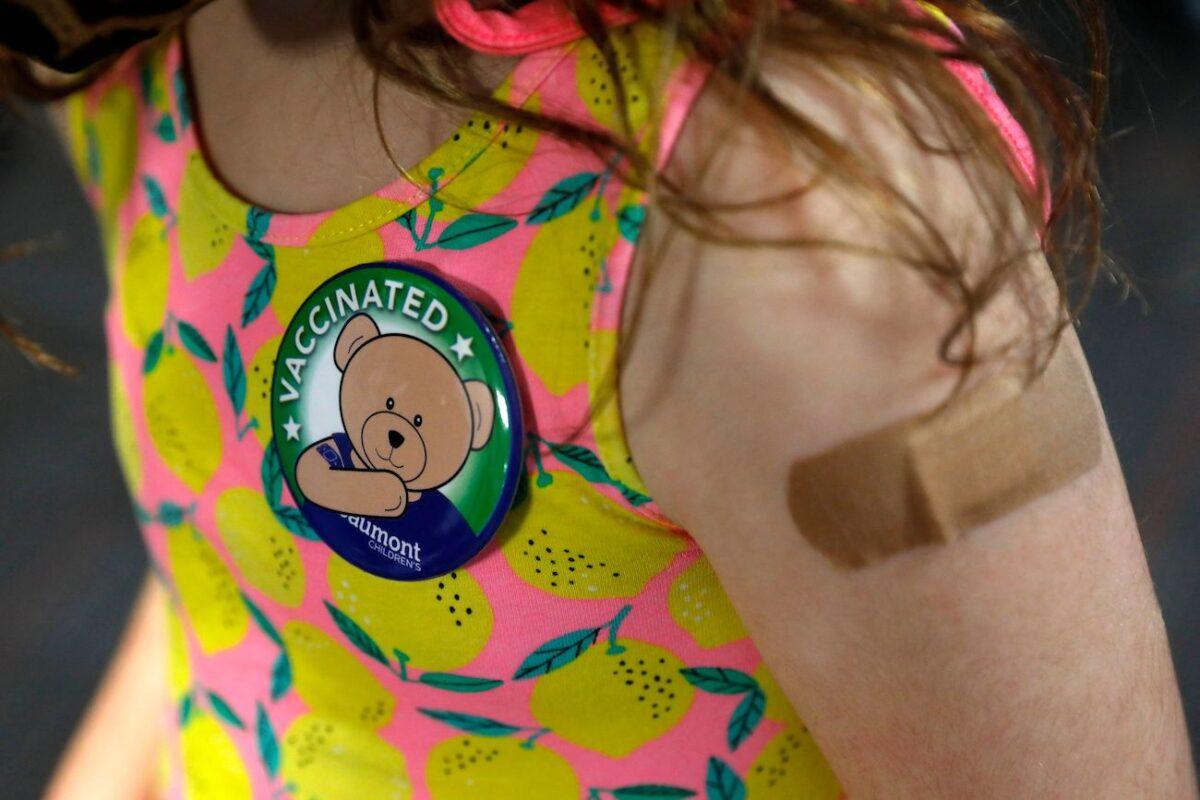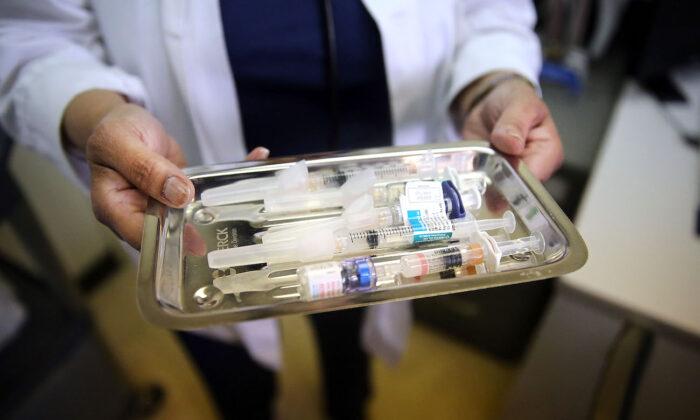A study funded by the Centers for Disease Control and Prevention (CDC) has found a “positive association” between vaccine-related aluminum exposure and persistent asthma.
Authors of the retrospective cohort study included current and former CDC staffers. They analyzed data from a cohort of 326,991 children who were born between 2008 and 2014 at seven medical care organizations across the United States that participate in the Vaccine Safety Datalink, a network of health groups that collaborate with the CDC in studying vaccine safety.
Results of the observational study showed that children who were vaccinated with most or all of the recommended aluminum-containing vaccines (>3.00 mg aluminum exposure) had at least a 36 percent higher risk of being diagnosed with persistent asthma than kids who got fewer vaccines (≤3.00 mg aluminum exposure).
About 6 percent of the children with eczema and 2.1 percent of the children without eczema developed persistent asthma in the study. Each additional milligram of vaccine-related aluminum exposure was associated with 1.26- and 1.19-times higher rates of persistent asthma among children with and without eczema, respectively.
Overall, there was a “positive association” between vaccine-related aluminum exposure and persistent asthma, the authors said. They did not conclude that the results suggest any causative link. “[A]dditional investigation of this hypothesis appears warranted,” they added.

CDC ‘Not Changing Vaccine Recommendations’
On its website, the CDC said that it is “not changing vaccine recommendations based on this single study, but further investigation is needed into this potential safety signal.”In a statement to multiple outlets, the agency noted that the study “has important limitations that the authors acknowledge.” It added about the study, “We recognize these results may sound concerning to some parents, but there continues to be overwhelming evidence of the benefits of vaccines.”
Several previous studies didn’t find a link between aluminum-containing childhood vaccines and allergies and asthma. But other research has linked aluminum in industrial workplaces to asthma. And mice injected with aluminum suffer an immune system reaction that causes the kind of airway inflammation seen in childhood asthma.
“Based on what I consider limited animal data, there is a theoretical risk that the aluminum in vaccines could influence allergy risk,” Daley said.
Aluminum Used in Vaccine Adjuvant
The study was prompted in 2013 after the Institute of Medicine, now known as the National Academy of Medicine, called for more federal research into the safety of childhood vaccines, including their use of aluminum.By age 2, children should be vaccinated against 15 diseases, according to U.S. recommendations. Aluminum adjuvants are in vaccines for seven of them.
“Adjuvanted vaccines can cause more local reactions (such as redness, swelling, and pain at the injection site) and more systemic reactions (such as fever, chills and body aches) than non-adjuvanted vaccines,” the CDC website reads.
The agency noted that aluminum is among the common metals found in nature and is present in air, food, and water.

Increased rates in allergies and asthma among children in the United States were noted during a 30-year period starting in about 1980, and some scientists wondered if there was a connection between that and vaccines that contained aluminum.
It also told the outlet that other factors that could not be measured by the study authors could have contributed to an increase in asthma in children. These include family history of asthma, secondhand smoking, as well as other ways of exposure to aluminum or other contaminants via diet or the environment that may contribute to poor health and contribute to the child’s asthma.
“We hope that additional studies can quickly provide more clarity, but at least from the national trend data, it appears that addition of aluminum-adjuvanted vaccines do not account for the overall trends that we see,” the CDC told STAT.
Brian Hooker, the chief scientific officer for Children’s Health Defense, said that the study has conceded that “asthma [is] correlated with aluminum exposure in both children with eczema and children without eczema.”







Friends Read Free